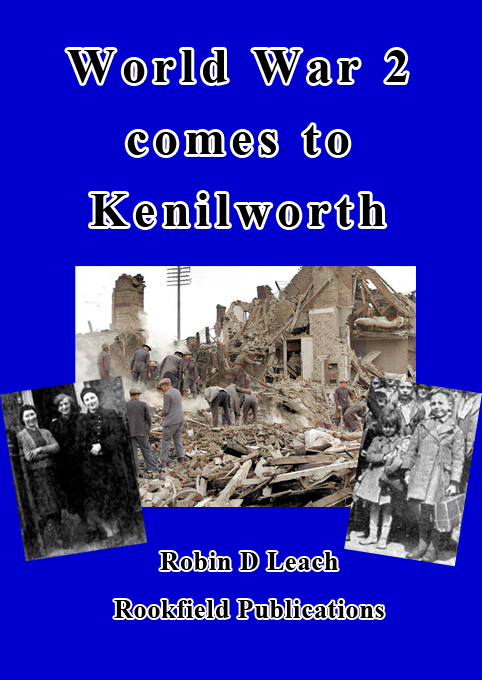World War 2 Comes to Kenilworth

208 pages, over 170 illustrations. £14.95
Available only through this website, or from Kenilworth Books 12 Talisman Sq, Kenilworth
With the generations that experienced World War 2 almost gone, it can be said that this book is long overdue. I have been collecting articles and snippets about the war and its affect on Kenilworth for close on 40 years, but it wasn’t until the Covid Lockdown that I began to assemble it all into a book; it took almost 2 years to complete.
The book begins on 1st January 1938, the day that ARP regulations came into force and townsfolk had to begin arranging themselves to protect and defend the town. It concludes with the official Victory celebrations and the completion of the prefab houses in the summer of 1946.
In between, the town went through the traumas of bombing raids, of coping with thousands of refugees from Coventry, and hundreds of evacuees from the south and other vulnerable areas. Wartime conditions saw the Abbey Fields planted with crops, and many other spaces turned over to allotments, all to help offset the difficulties of rationing. Over 2,000, of a population of 10,000, at one time or another volunteered for duties with the WVS, the Wardens, the fire brigade, and supply depots to hand-make camouflage nets and clothing, and many other positions such as telephonists, ambulance drivers, messenger boys, fire watchers, etc., all whilst trying to keep to as normal a life as possible with work, and their children attending schools – where pupils were trained to deal with incendiaries and grew their own school dinners.
Despite it all, there were some incredible successes with fund raising, from Salute the Soldier and Wings for Victory, War Weapons and Tanks for Attack, and a remarkable collecting of furniture to send to an area of London that had fallen victim to V1s.
The book is written chronologically and so events in Kenilworth can be seen in context with the war as a whole. Kenilworth’s MP Anthony Eden is prominent on both the local and national stage, and parts of Churchill’s speeches, that no doubt helped Kenilworthians through the bad times, are included.
The story is told by collecting together many eye-witness accounts and personal recollections, some recorded by this author, as well as newspaper reports and Council minutes of the day. The vast majority of the photographs are published in a book for the first time; all brought together to record how the town and its citizens coped when World War 2 came to Kenilworth.